Category Archives: news

Olympus launches 8 new products in the Indian market
Olympus Imaging India Private Limited recently announced the launch of 8 new cameras in its Olympus Stylus brand. The XZ-2 and the XZ-10 for image quality, SZ-16 and SH-50 for low light performance, VG-165, VG-180 and VG-190 for easy shooting and the awaited Tough – TG-2 are added to the Indian shelves.
With the launch of these cameras, Olympus has
shown interest in adapting to changing times, as the compact camera segment continues
to fall to the smartphone camera. At such a point in time, the advanced
point-and-shoot, an advanced breed of cameras has taken much of the imaging
world by surprise with competitive imaging quality at extremely competitive
prices.
“Much has been said of India being a price sensitive country. Today, we at Olympus, having interacted with Indian consumers can firmly say that they are willing to consider a premium, provided the product is of exceptional quality, both style-and-substance-wise” said Mr. Kenichiro Mori, newly appointed Managing Director, Olympus Imaging India Private Limited adding, “We have placed our faith in advanced point-and-shoot this year as we see consumers evolving to ask for a product which is a combination of exceptional photoquality and amazing style. We want to be at the forefront of that race.”
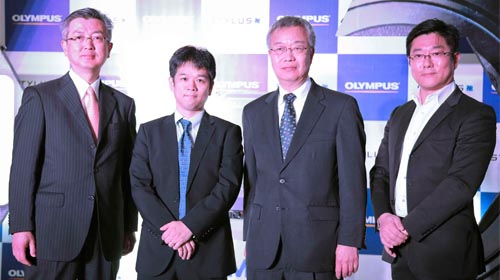
Olympus has entered the market with these multiple offerings in the compact camera segment, and its PEN series and the t O-MD E-M5 in the professional camera space. With these it hopes to change the face of the Indian imaging industry. “India has traditionally had a slower rate of adoption of new technology than some other regions such as Europe, the Americas or Japan. But demographically being a young country, this trend is rapidly reversing. Keeping this in mind, Olympus is concentrating on launching products which are futuristic, yet are firmly anchored in needs of consumers.

Nikon releases the AF-S NIKKOR 80-400mm f/4.5-5.6G ED VR
Nikon recently announced the
release of the AF-S NIKKOR 80-400mm
f/4.5-5.6G ED VR, a FX format, 5x telephoto zoom covering a range of 80-400mm. As
it covers a wide variety of focal lengths, the camera is primarily aimed at genres
which require a higher zoom range, like bird, sports or landscape, though it
can be put to use in a variety of other genres as well. The lens is made with a
new optical design utilizing four of Nikon’s ED lens elements, one of them being
the Nano Crystal Coat which helps reducing ghost and flare. There is also a
Silent Wave Motor (SWM) which helps the lens silently autofocus. The lens comes
with three focusing modes – A/M (autofocus with manual override, AF priority),
M/A (autofocus with manual override, manual priority) and M (manual).
Commenting on the announcement, Mr. Hiroshi Takashina said, “We
are pleased to announce the new addition to our NIKKOR lens line-up. It is a
much awaited lens and we assure that it will suffice the requirements of a
photographer who wishes to capture distant subjects.”Talking about Nikon’s presence in India, he
added, “Nikon has always believed in creating a photography
culture in India, and to achieve this we are coming up with new products to
meet discerning needs of the growing customer base.”
Samsung Galaxy Camera v/s Nikon S800c shootout
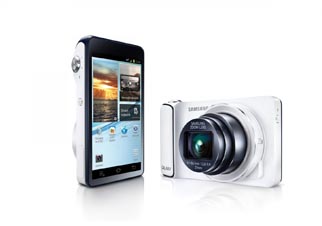
Samsung Galaxy Camera Review
Since the announcement of the Samsung Galaxy camera, we have been waiting to get our hands on this beauty. In fact, our hopes were triggered even higher after we reviewed the Nikon S800C in the last month’s issue, which was the first Android powered camera. Samsung is pretty much the only manufacturer that has given Apple a run for its money in the smartphone arena, so when they announced that they were launching a Galaxy camera on the Android platform, it was a simple no brainer.
It doesn’t take a genius to figure out that there was going to be a heavy integration of the point-and-shoot system with a smartphone like user interface. But the biggest dilemma I had while reviewing it was if I should review it as a phone or as a camera. Because of its features, it was very difficult for me to disassociate it from a smartphone, but due to its primary objective I couldn’t help but think if it was really a camera. So what exactly has Samsung come up with? Let us find out.
What
is the Galaxy camera?
Well in simple words, it’s the smaller version of the Galaxy Note 2 and a bigger version of the Galaxy S3 attached with a camera. Naturally, it is a camera that comes equipped with a 21x zoom, runs on the Jelly Bean OS, built-in Wi-Fi, GPS and a sim-card slot to stay connected on the move (as if you already weren’t with your smartphones these days).
Who
is it exactly for?
At Rs. 29,995, who is the Galaxy Camera exactly meant for? Especially as one can easily buy an entry level DSLR in that kind of money these days. Well, it is basically for the average, trigger happy Social Network junkie, as the term goes these days. A person who is looking for decent picture quality, but more importantly wants to share the details of their life with the outside world.
Look, Body and Feel
One would have to be really not paying attention dislike the cameras design and look. It seems elegant, stylish and big. When you will see the camera in one of the commercial ads on television these days, you might find yourself thinking that it is a pint-sized. But it is only when you see it in reality when you see it for the monster it is. The Galaxy camera is much bigger than most of the point-and-shoot cameras out there, and surely much heavier as well. At 300 gms the camera is much heavier than the others in the similar category. But it still looks quite pleasant due to its simple design and minimal look. The right side of the camera features a protruding textured grip, which does its job fantastically, whereas, the front houses the 23mm wide lens which offers 21x zoom.
The magic begins at the back, which looks exactly like the screen of the Galaxy series of phones. It’s big, bright and unlike what one has seen on any camera before. Essentially, the Galaxy camera looks very much like a phone fitted with a 21x optical zoom lens in the front.
Interface
Samsung has really aced the platform here. Not only have they aced it, but much like Apple, created a new category in the camera segment. Powered by the latest Jelly Bean OS on the Android platform, the Galaxy camera looks and feels exactly like a smartphone. Not only that, it can do everything that a phone can, minus the calls. The integration of the touch screen is seamless, thanks to the 4.8” Super AMOLED touch screen that have gained popularity due to the Samsung range of smartphones.
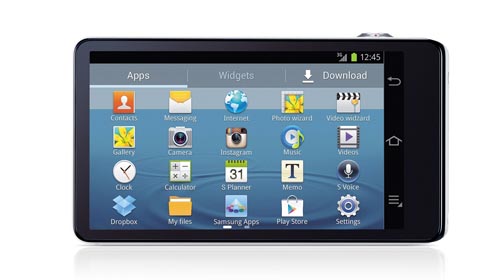
It also comes preloaded with interesting apps for photo editing, and can always be connected to the Google Play Store to download a host of apps as per the users interests. While the screen is seamless and big, it does tend to have some chinks in its armour. Occasionally while toggling between the menus, there seemed to be some lag.
Performance
While everything about the Galaxy camera is great, its primary objective is to deliver good pictures. And that is where we thought that it lacked punch. The best way to describe the cameras performance is average. The camera delivers crisp and sharp images in broad daylight, but tends to have focusing problems in low light conditions. Also, there is a visible noise on the images shot under the same setting.
Although pictures shot at ISO 100 do not exhibit noise, it seems like the noise reduction algorithms go into an overdrive trying to keep a check on it, and we thought the ultimate results were far from impressive. The noise gets worse as we progress towards the higher ISO values. A 16-megapixel sensor doesn’t necessarily do a whole lot for your photos if you have a 1/2.3” sensor like the one on this camera.
Sample Images


Although the camera offers manual options to control the aperture and the shutter speed to click pictures, the touch screen, which otherwise is a boon, suddenly tends to become a bane because you have to get into the touch screen again and again to either bracket your images or change certain settings. I wish that there were buttons dedicated to control it directly.
While the camera provides a great grip on the right-hand side due to its rubberised texture, it’s next to impossible to rest your fingers anywhere on the left, especially when the flash pops up. This means that there is a possibility of getting shaky pictures, especially in low light conditions.
Conclusion
At Rs. 29,995 the Samsung Galaxy Camera offers a lot to the tech-savvy consumer and one must hand it to the manufacturer for creating a whole new market segment. But where Samsung seems to have aced the integration of a camera with a phone, the Galaxy’s image quality and performance takes a beating. While the pictures in broad daylight seemed decent, we felt that the camera struggled a little under low-light conditions. But being one of the first cameras to touch upon this segment, it doesn’t seem to be a bad effort at all. If you are looking for a camera which delivers average photography performance but a host of other attractive features, the Samsung Galaxy Camera is a perfect choice for you.

Jindal Photo launches Kodak Premium paper
Jindal Photo Ltd
announced the launch of the new Kodak Premium Digital Paper at the Photofair
this year. The company seems excited about the future of their new product in
the Indian market and expects the same to drive growth. David Santer, Regional Director, Output Systems programme, Asia Pacific
region, Kodakwho was visiting the fair along with some team members is also
optimistic about this new launch. He says that the new paper creates premium,
thicker prints with increased gloss, deeper blacks and enhanced robustness for
post-production of the premium products. He also seemed excited by the response
that the Jindal booth got at the expo in the last two days. Although the price
of this paper has not been announced yet, it is expected to be done sometime in
April.
India ranks as one
of the top three markets for Kodak in the Asia Pacific region. Kodak has
already launched four different papers in 2012 and will be launching another
three this year. “We have a strong market share and continue to grow this year.
It has been a successful 2012 and we are hoping to do better in 2013. Although
competition is tough but we have a significant market share in Asia and will
continue to grow,” added Santer. In India, Kodak works with Jindal Photo Ltd
and has developed a strong relationship with them since August.
When asked about Kodak’s
Edge paper? Santer adds that this paper is not changed and is excellent and has
been accepted very well in many countries worldwide. However, there were some
technical issues in India which have now been sorted out. With the launch of
this new premium paper, he seems confident of surging ahead. Wedding
photographers have responded positively to this new launch in the last two days.
Scott Robinson, Director, Current Product Marketing, Retail Systems Solutions who is visiting India for the first time also sees lot of opportunities in the Indian market.
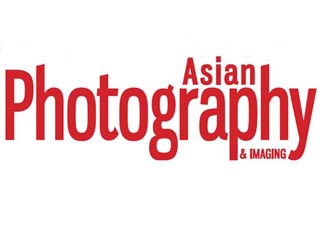
The journey of our logo
It is said that a brand name and its logo are supposed to project what the company, its people and their objective are. One of the first things that any organisation must decide on is its logo, or, as in our case, its masthead. But over the years every business undergoes transformations of some or the other sort. And the logo Asian Photography has a similar story.
It was 25 years ago when the journey of this magazine started, but Asian Photography was not always known by the same name. In fact when Mr. Trilok Desai, MD and Publisher, SAP MEDIA WORLDWIDE LTD started the company, the flagship title was Amateur Photography. The magazine in those days was much like the nascent stage of the industry then. The designs were very 80s and the content and images all seemed to lack a certain punch, compared to current standards. Amateur Photography and its logo were adopted for almost a decade before our current brand name Asian Photography came into existence.
The current name of the magazine was adopted in order to give it a new look, dimension and feel, and alter the content accordingly. The ideology behind using the word “Asian” was to encapsulate the beauty of Asia and cover a larger footprint beyond just India. It was also to standardise the look of the masthead as per international standards, since the magazine had started broadening its horizons on the international map.
The look of our masthead projected style, elegance and class. All of these would work together to deliver crisp and precise content to our readers of 25 years. But gradually, we grew from a small, promising child into a full grown successful human being. Around six years back we started the APAC edition of Asian Photography, instituted an awards set that is unquestionable and gave birth to the idea of Top 10 Most Influential People in Photography.
The journey of our magazine has been nothing less than that of a child actor. From a child artist to a full-fledged superstar today, the last few years have seen exponential growth of our magazine in many spheres. And in line with all that we have been through, we feel that our journey has just begun. In these 25 years we have come a long way, and all that time has also shaped us into who we are today. That is the reason why we felt that on the even of our 25th Anniversary it was time to project our presence as a much stronger and a more passionate brand that we have become today. And thus, the change in the logo, style and design of the magazine from the January 2013 issue of the magazine.
We hope that you like the new look, design and content of the magazine.
Bhavya Desai
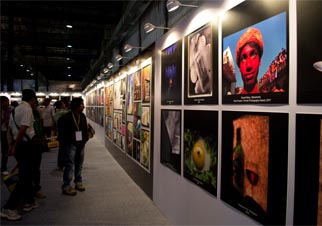
Delhi gears up for the 18th edition of Consumer Electronic Imaging Fair
All
India Photographic Trade and Industry Association (AIPTIA) is holding the 18thedition of Consumer Electronic Imaging Fair this year at Pragati Maidan, New
Delhi. It is one of the biggest exhibitions involving the photographic trade
industry, across the world. The Consumer Electronic Imaging Fair, earlier known
as Photofair, will go on from the 3rd of January till the 6thof January, where a slew of the major brands in the industry will showcase
their upcoming as well as existing line of products.
AIPTIA,
through the Photofair, brings together the biggest brands in the imaging
industry at one venue every year in order to encourage interaction with their
consumers. Based out of Mumbai, AIPTIA
regularly conducts workshops and seminars in the imaging field for the members
of the industry. Like every year,
Photofair this year is also expected to showcase the latest, state-of-the-art
cameras, studio equipment, accessories etc. from the biggest brands in their
respective industries.
EXHIBITION
TIMINGS: 10.00 am to 6.00 pm
·
Exclusive Business
Hours: 3rd & 4th January, 2013 from 10.00 am to 12 noon.
·
Visitor Hours: 3rd
& 4th January, 2013 from 12 noon to 6.00 pm
5th & 6th January, 2013 from 10 am
to 6.00 pm.
If you are planning to make a visit on the last day do remember
that visitor’s entry will only be allowed till 16.00 hrs on the last day of the
event.
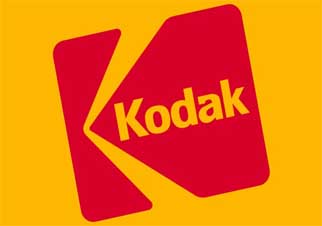
Kodak looks to end bankruptcy
In an
attempt to put an end to the bankruptcy it filed earlier this year, Kodak has
sold patents worth $525 million to an assortment of bidders in order to re-enter
the imaging market. Intellectual Ventures (IV) and RPX corps, who have some of the world’s
biggest technological companies, have bid to acquire the patents. According to
court documents, some of the said companies include Adobe Systems Inc, Amazon.com Inc, Apple Inc, Facebook Inc,
Fujifilm, Google Inc, Huawei Technologies Co Ltd, HTC Corp, Microsoft Corp,
Research In Motion Ltd, Samsung Electronics Co Ltd and Shutterfly Inc.
With this step Kodak is trying to bring itself
back into the industry in early 2013, as had been was one of the major imaging
brands in the world for a long period of time before it filed for bankruptcy
earlier this year.. The said agreement is currently up for approval in the US
Bankruptcy Court in Manhattan, New York under a certain chapter 11, which gives
time to a company to rearrange its assets and liabilities. As it is still
present in the market by the virtue of some of its digital businesses, Kodak making
a comeback as a big player in the imaging market doesn’t look very far-fetched
after this deal.
